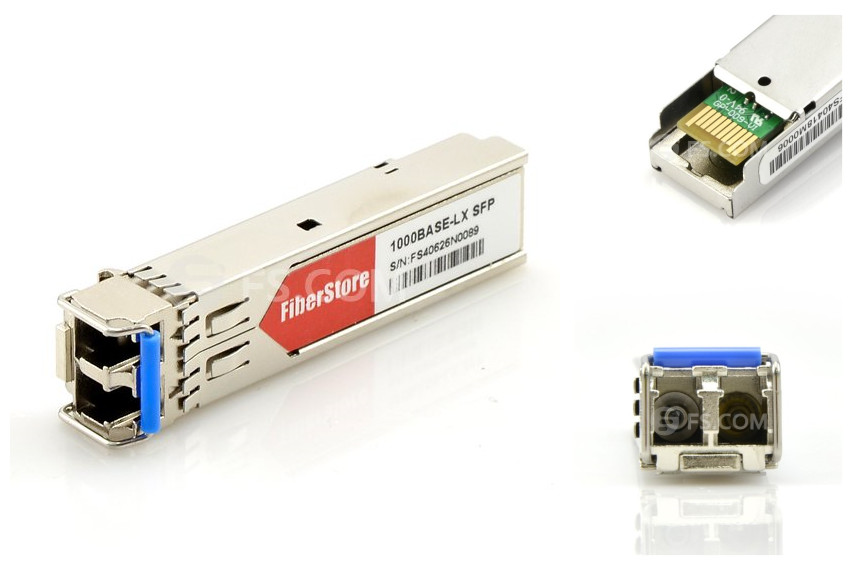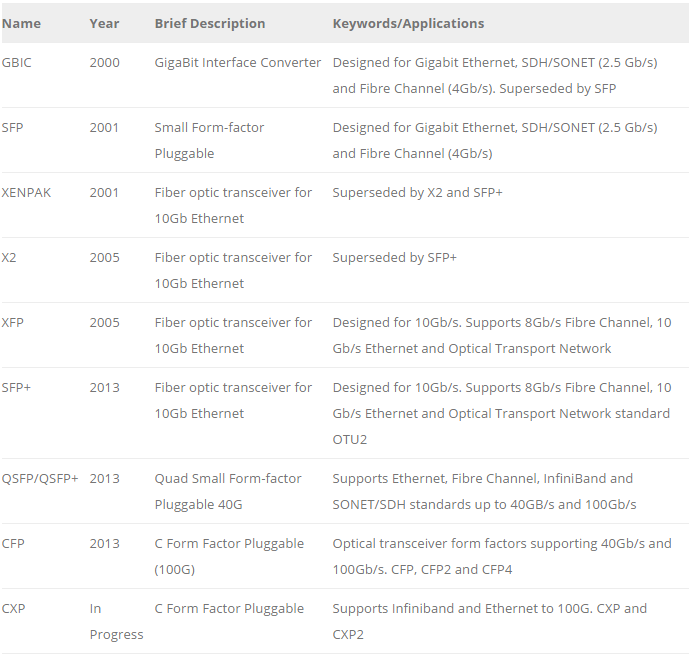May 03, 2016
Sometimes, we may see this kind of description: This Allied Telesis AT-SPSX compatible SFP transceiver is a 1000BASE-SX SFP 850nm 550m transceiver module, and it is fully compatible with MSA SFP specification. What does MSA mean? It seems like a standard to define optical transceivers. Actually, MSA is an agreement which equipment vendors assume when developing form factors, usually called transceiver modules, for communication interfaces. In this post, some basic knowledge of the MSA will be provided.
MSA stands for multi-source agreement. It is an agreement among multiple manufacturers to make products compatible across vendors, acting as de facto standards and establishing a competitive market for interoperable products. Products that adhere to MSAs include various fiber optic transceivers (such as SFP, SFP+, XENPAK, QSFP, XFP, etc), fiber optic cables, and other networking devices. For example, HP J4859C compatible SFP transceiver, as shown below, is a 1000BASE-LX SFP 1310nm 10km DOM transceiver module, which is fully compatible with MSA SFP specification. MSA strictly defines the operating characteristics of those optical transceivers so that system vendors can implement ports in their devices which allow MSA compliant optical transceivers produced by the name brand, as well as third party vendors, to function properly. That is to say, optical transceivers can be purchased from multiple sources in the open market. MSA is also very important in the cabling industry as the density, line speed, power consumption and typical cost of a cabling can strongly impact its success in the marketplace, which in turn, can drive the choice for both connector and media type.

When designing their communication systems, equipment vendors all rely on MSAs to ensure interoperability and interchangeability between interface modules. With MSAs, suppliers can produce optical transceiver modules with the same functions. For this reason, there are many module suppliers for customers to choose. Freedom of choice lays the foundation of the efficient operation of markets. To gain a larger share of the market, suppliers may act as efficiently as possible, which will drive down costs and offer wide options to customers. Besides, with so many excellent 3rd party optical transceiver module suppliers in the market, network operators don't need to purchase optical transceivers directly from system (original brand) vendors, which will also save huge costs. Finally, there is no doubt that all those factors will help support and encourage creation and adherence to standards at the same time. Over the past decade, the MSA process has helped accelerate the acceptance of modules such as SFP+ and CFP, allowing optical transceivers to support greater bandwidth such as 40G and 100G.
MSA is a popular industry format jointly developed and supported by many network component vendors. Many common optical transceivers are specified by it at present. MSAs usually specify parameters for optical transceivers and their guideline values, such as the electrical and optical interfaces (e.g. SX, LX, EX, ZX, etc), mechanical dimensions, electro-magnetic values and other data. This data is accessible by the host system over the I2C interface, as is the status of the optional DDM functions. Some approved fiber optic transceiver multi-source agreements are listed in the following table:

MSA is an agreement between multiple manufacturers to make products which are compatible across vendors. There are many kinds of products that adhere to MSAs, such as SFP and SFP+ optical transceiver devices are 'standardized' by multi-source agreements. MSAs provide you with a lot of options. Optical transceivers and fiber optic patch cords may be purchased from any of the multiple sources in the open market.
Posted by: jowang at
06:10 AM
| No Comments
| Add Comment
Post contains 600 words, total size 5 kb.
35 queries taking 0.0154 seconds, 70 records returned.
Powered by Minx 1.1.6c-pink.









